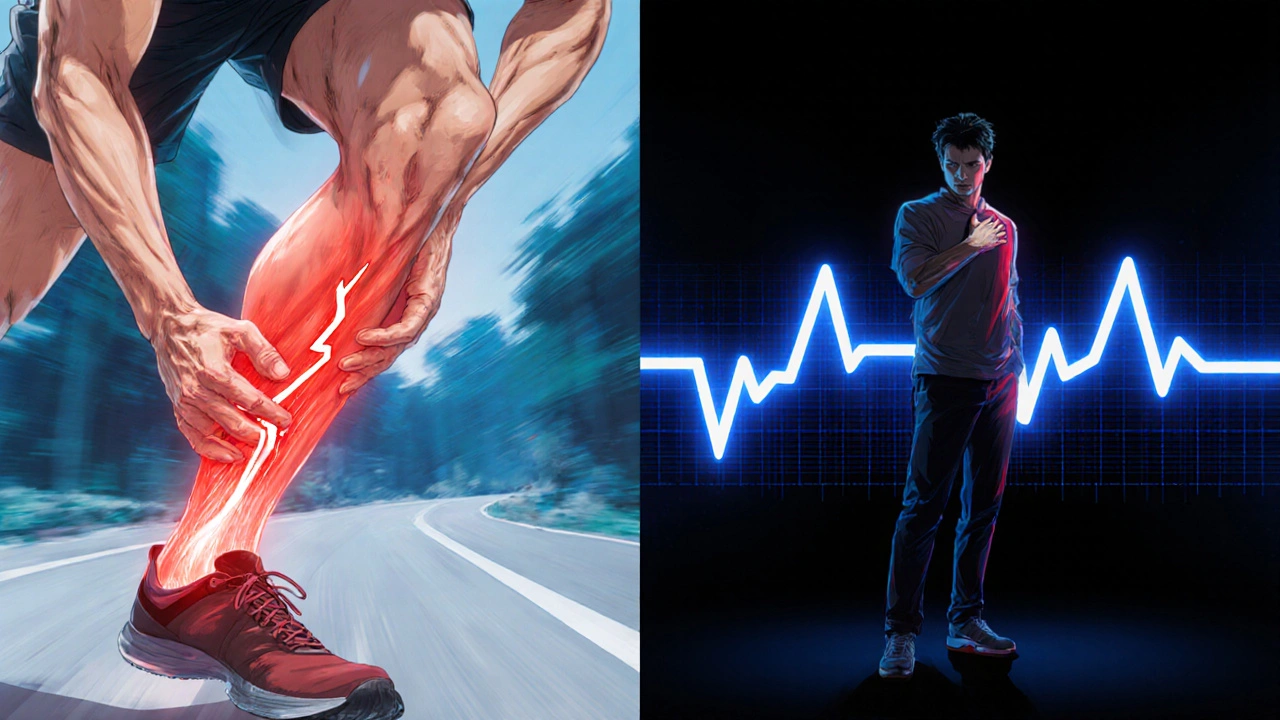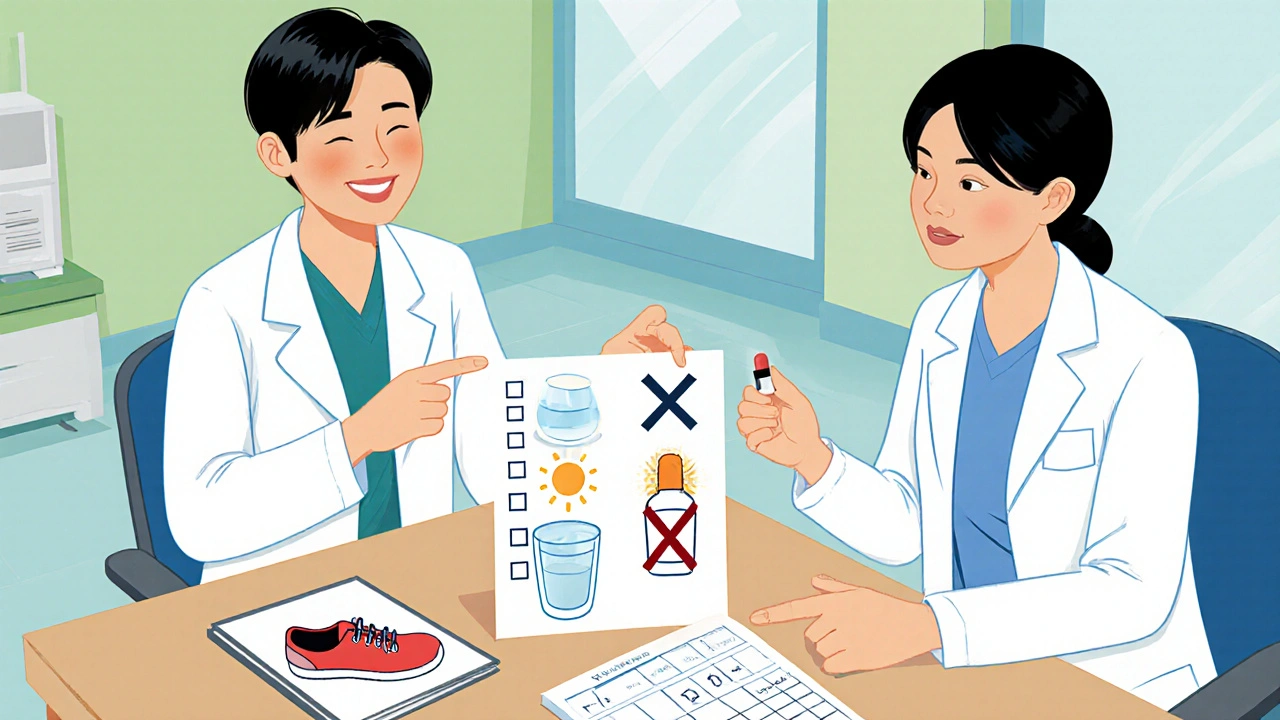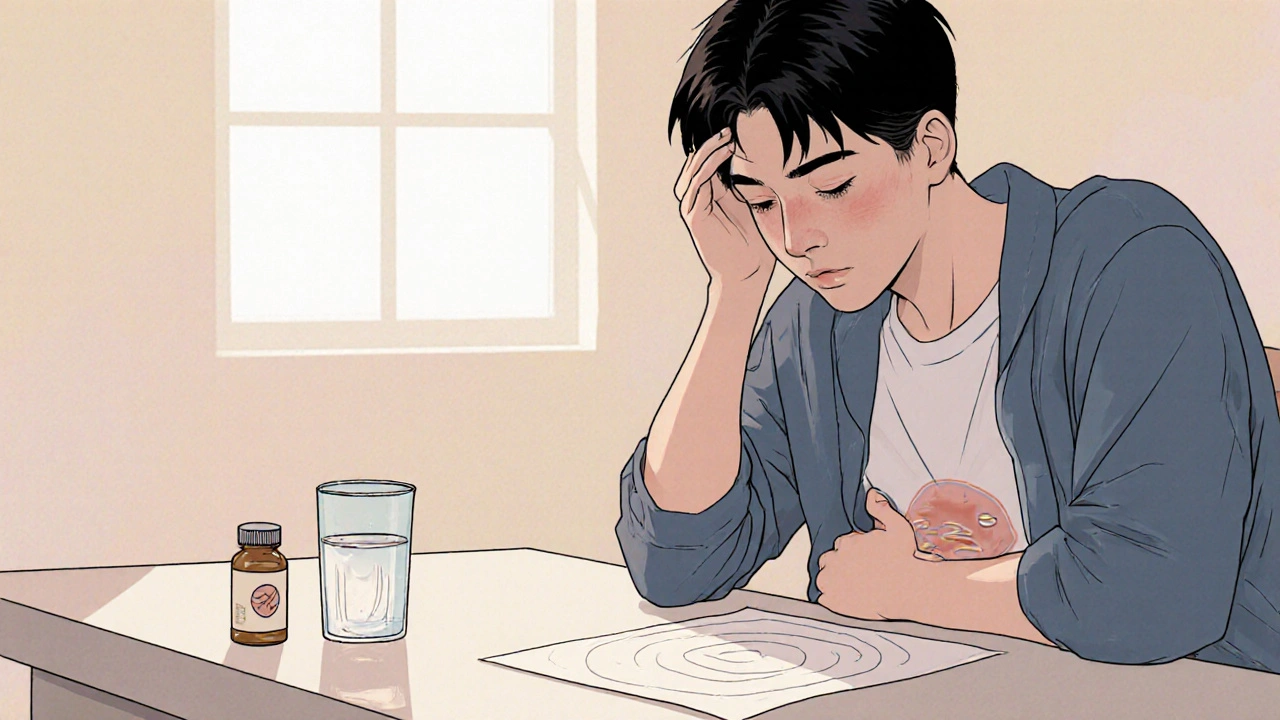Quick Takeaways
- Common complaints include nausea, headache, and mild diarrhea.
- Serious issues such as tendon rupture or heart rhythm changes are rare but require immediate attention.
- Older adults, people on steroids, and anyone with a history of heart problems face higher risk.
- Drug‑drug interactions can raise toxicity; always share your full medication list.
- Knowing the warning signs helps you act fast and avoid complications.
What Is Moxifloxacin?
Moxifloxacin is a broad‑spectrum fluoroquinolone antibiotic used to treat various bacterial infections, including community‑acquired pneumonia, sinusitis, and skin infections. It works by interfering with bacterial DNA replication, which stops the germs from multiplying.
How Does It Fit Into the Fluoroquinolone Class?
Fluoroquinolones are a class of synthetic antibiotics that share a core chemical structure and a similar mechanism of action. Other well‑known members include ciprofloxacin, levofloxacin, and gemifloxacin. While the class is effective, it also carries a shared safety profile that clinicians monitor closely.
Common (Moxifloxacin side effects) You May Notice
Most people tolerate the drug well. Typical, mild reactions appear within the first few days and usually resolve without stopping therapy:
- Nausea or an upset stomach
- Headache, often described as a dull pressure
- Transient dizziness or light‑headedness
- Diarrhea-sometimes mild, occasionally watery
- Rash or mild itching
If symptoms linger beyond a week or worsen, contact your healthcare provider. Adjusting the dose or switching to a different antibiotic often clears the issue.
Serious Adverse Events to Watch For
Although uncommon, some side effects can be dangerous. Knowing the red flags lets you act quickly.
| Category | Symptoms | Typical Onset |
|---|---|---|
| Common | Nausea, headache, mild diarrhea | Hours to 2 days |
| Serious - Tendon Issues | Sudden tendon pain, swelling, or rupture (often Achilles) | Days to weeks, can appear after therapy ends |
| Serious - Cardiac | Palpitations, irregular heartbeat, fainting (QT prolongation) | Within the first week |
| Serious - Neurological | Severe headache, confusion, hallucinations, seizures | Variable, may be delayed |
| Serious - Dermatologic | Severe skin reactions like Stevens‑Johnson syndrome or toxic epidermal necrolysis | Usually within 1-2 weeks |
| Serious - Gastro‑intestinal | Clostridioides difficile infection (persistent watery diarrhea, abdominal cramping) | After several days of therapy |
Any of the serious symptoms merit immediate medical evaluation.

Tendon Rupture - Why It Happens
Tendon rupture is a break or severe tear of a tendon, most often the Achilles, that can cause sudden loss of function and intense pain. Fluoroquinolones, including moxifloxacin, can degrade collagen, weakening tendon fibers. The risk spikes in people over 60, those on corticosteroids, or patients with a prior tendon injury.
Prevention tips:
- Avoid high‑impact activities (running, jumping) while taking the drug.
- Report any new joint or tendon pain immediately.
- If you’re on steroids, discuss alternative antibiotics with your doctor.
QT Prolongation - A Cardiac Warning
QT prolongation is an extension of the heart’s electrical repolarization period, which can predispose to dangerous arrhythmias like torsades de pointes. Moxifloxacin can block potassium channels, lengthening the QT interval, especially in patients with existing heart disease, electrolyte imbalances, or those taking other QT‑prolonging drugs.
Key signs include palpitations, dizziness, or fainting. An electrocardiogram (ECG) before starting therapy is recommended for high‑risk patients.
Photosensitivity and Skin Reactions
Photosensitivity is an increased skin reaction to sunlight, resulting in redness, itching, or blistering after UV exposure. Although less frequent than with older fluoroquinolones, moxifloxacin can still trigger this response. Use sunscreen and protective clothing during treatment.
Severe skin reactions-Stevens‑Johnson syndrome and toxic epidermal necrolysis-are medical emergencies. They present as widespread blistering, fever, and mucosal involvement. Discontinue the drug immediately and seek care.
Gut Health Risks: C. difficile Infection
Clostridioides difficile infection (formerly C. difficile) is a bacterial overgrowth in the colon that causes severe diarrhea, abdominal pain, and fever, often after antibiotic use. Broad‑spectrum antibiotics like moxifloxacin disturb normal gut flora, allowing C. difficile to thrive.
Watch for watery diarrhea lasting more than three days, especially if you have recent hospital exposure. Early testing and treatment improve outcomes.

Drug Interactions That Matter
Moxifloxacin shares metabolism pathways with several other medicines. Interactions can raise toxicity or blunt effectiveness.
- Antacids containing aluminum or magnesium: bind to the drug and cut absorption. Separate dosing by at least two hours.
- Warfarin: fluoroquinolones may increase INR, heightening bleeding risk. Monitor clotting labs closely.
- Non‑steroidal anti‑inflammatory drugs (NSAIDs): combined use can heighten seizure risk, especially in patients with a seizure history.
- Other QT‑prolonging agents (e.g., azithromycin, sotalol): may compound heart rhythm effects.
Always hand the pharmacist a complete list of prescription, OTC, and herbal products before filling your prescription.
Monitoring and When to Call a Doctor
During therapy, most clinicians advise a simple check‑in:
- Note any new or worsening pain, particularly around joints or tendons.
- Track heart‑related symptoms-palpitations, faintness, or unusual fatigue.
- Watch bowel movements for persistent diarrhea or blood.
- Observe skin for rash, especially if it spreads or blisters develop.
If any of these appear, contact your provider right away. In emergencies (sudden severe tendon pain, fainting, or blistering skin), go to the nearest emergency department.
Special Populations and Contraindications
While moxifloxacin is approved for adults, certain groups should avoid it:
- Pregnant or breastfeeding women-safety data are limited.
- Children and adolescents-risk of joint and tendon problems is higher.
- Patients with a known allergy to fluoroquinolones.
- Individuals with a personal or family history of long QT syndrome.
Alternative antibiotics are usually preferred for these populations.
Practical Tips for Safer Use
- Finish the full prescription even if you feel better; stopping early can foster resistance.
- Take the tablet with a full glass of water; avoid lying down for 30 minutes to reduce esophageal irritation.
- Store at room temperature away from moisture and heat.
- Record the exact start and end dates in a medication log; share it with any new healthcare provider.
Frequently Asked Questions
Can I drink alcohol while taking moxifloxacin?
Alcohol does not directly interact with moxifloxacin, but drinking can worsen nausea or dizziness. It's safest to limit alcohol until you finish the course.
How long does it take for side effects to disappear after stopping the drug?
Mild symptoms usually fade within a few days. Serious reactions, like tendon issues, may require weeks of rehab or medical treatment before full recovery.
Is moxifloxacin safe for people with kidney problems?
Dosage adjustments are often needed for moderate to severe renal impairment. Your doctor will order blood tests to set the right dose.
What should I do if I miss a dose?
Take the missed pill as soon as you remember unless it’s almost time for the next dose. In that case, skip the missed one and continue with your regular schedule-don’t double‑dose.
Are there any foods I should avoid while on moxifloxacin?
No specific foods interact, but stay hydrated and keep a balanced diet to help your body handle any gastrointestinal upset.
Understanding Moxifloxacin side effects equips you to enjoy the drug’s benefits while staying alert to warning signs. When in doubt, always reach out to a healthcare professional-your safety comes first.


5 Comments
Just a heads‑up: always keep a list of all meds when you start moxifloxacin.
So the article tells you moxifloxacin is basically a miracle drug, but that’s a stretch, honestly. I mean, sure, it clears up pneumonia, but the side‑effect list reads like a nightmare for anyone who isn’t willing to gamble with their tendons. First of all, nausea and a headache? That’s just the tip of the iceberg, and the author conveniently downplays the tendon rupture risk, which, by the way, has been documented in thousands of case reports. Then there’s the QT prolongation – a subtle cardiac quirk that can turn a simple prescription into a heart‑monitoring marathon. You think taking an antibiotic for a week is harmless? Think again. The gut flora disruption leading to C. difficile is another silent killer that the piece barely mentions. And let’s not forget drug interactions: mixing moxifloxacin with antacids or warfarin is practically an invitation for disaster, yet the article treats it as a footnote. Honestly, the whole “rare but serious” narrative is a marketing ploy to keep you from questioning the pharma agenda. If you’re over 60, on steroids, or have any cardiac history, you’re basically signing up for a lottery ticket with a very low odds of winning. The author also glosses over the fact that fluoroquinolones as a class have been linked to long‑term musculoskeletal damage, something the FDA has warned about repeatedly. Finally, the piece says “finish the full prescription,” which is the same old line that keeps resistant bugs alive. In short, if you’re not a medical professional, you’d be better off asking for an alternative antibiotic that doesn’t come with a side‑effect catalog longer than a novel.
I totally get the worries, but there’s also a bright side to keep in mind. Even though moxifloxacin can feel like walking a tightrope, many patients finish their courses without a hitch, and the benefits often outweigh the unlikely risks. Think of it like a philosophical balance: the cure versus the potential harm, and most of us live in that space every day. It’s really helpful to stay aware, like the article says, but don’t let fear freeze you out of needed treatment. If you notice a weird tendon ache, call your doc-quick action can prevent bigger issues. At the same time, keep a journal of any symptoms; that way you and your doctor can spot patterns early.
Bottom line: stay informed, stay calm, and trust the professionals while being your own health advocate.
The overview does a solid job laying out the common versus serious effects. I appreciate the clear bullet points on what to watch for, especially the tendon and heart warnings. It’s also good that the piece emphasizes talking to your pharmacist about drug interactions. Staying observant during therapy can really make the difference between a smooth recovery and an emergency visit.
Absolutely agree with the need for vigilance, especially for anyone juggling multiple meds. From my experience, setting a daily reminder to log any new aches or palpitations has saved me from potential complications. Also, if you’re on steroids, a quick chat with your doctor about alternative antibiotics can be a game‑changer. Stay proactive and don’t hesitate to ask for an ECG if you have any heart history.
Write a comment